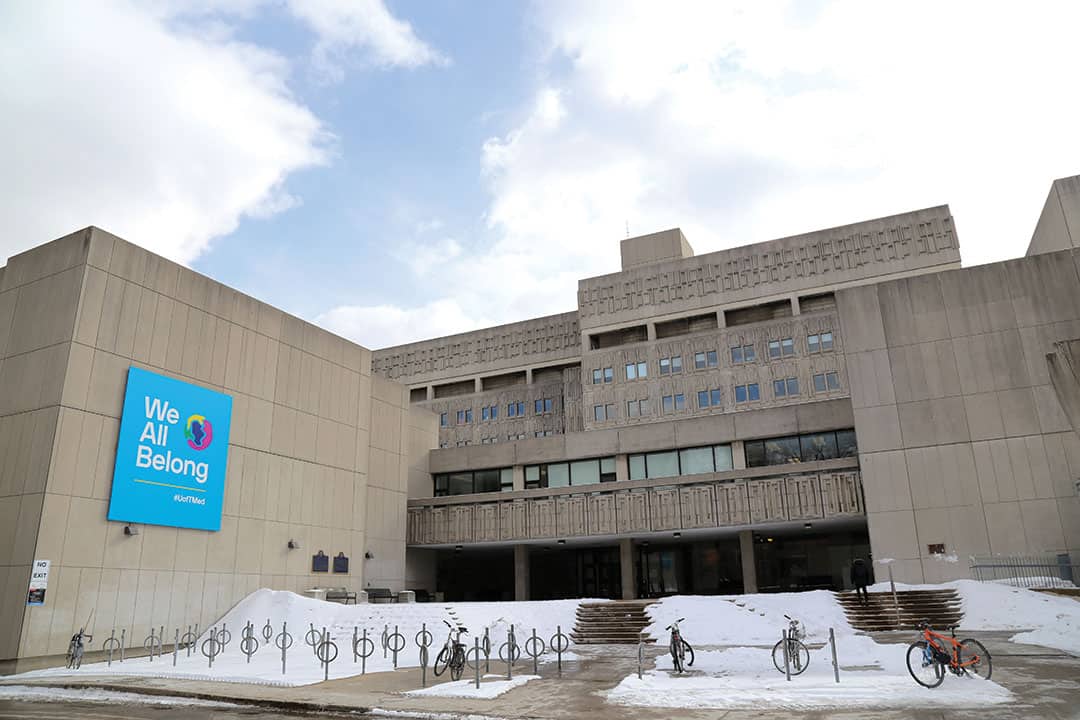One year after implementing the Black Student Application Program (BSAP), the U of T Faculty of Medicine has seen an increase in the number of qualified Black medical students admitted to its Doctor of Medicine (MD) program. From one Black student in the 2016-2017 application cycle to 15 in the 2018-2019 cycle, the increase in admitted students signals a significant improvement.
U of T’s BSAP is an optional application stream for applicants who self-identify as Black. The general admission requirements remain the same for students who apply through BSAP, but students must submit an additional personal essay highlighting why they chose to apply through the stream. Members of the Black community, including Black physicians, faculty members, and students take part in admissions file reviews and admission interviews.
There are no designated seats for BSAP applicants and no quotas that need to be met in order to ensure a more diverse student population.
Dr. David Latter, Director of MD Admissions and Student Finances of the MD program, believes that “one of the reasons BSAP has been so successful, so quickly, is because we are demonstrating in a concrete fashion that U of T is serious about diversity.”
It is important that medical schools reflect the communities they serve.
In Ontario an estimated one to 1.3 per cent of doctors are Black whereas approximately 4.7 per cent of Ontarians identify as being Black. Research has shown that greater diversity in medical classes leads to doctors who are better able to serve diverse communities.
“Having different ethnic and racial groups within the profession broadens the scope of care as well as concern and awareness about unique health conditions that affect specific populations,” explained Latter.
Marginalized student populations face various unseen barriers when applying to academic programs. One such barrier is the fear of feeling culturally excluded or isolated.
Chantal Phillips is a first year U of T medical student who applied through BSAP. In an email to The Varsity she wrote that one of her fears while applying to medical school was that “[her] work in the black community would not be fully understood or valued when compared to applicants doing work for other causes.”
Phillips recalled the pressure she felt to remove the word “Black” from the Black Youth in Science Mentorship Program and from Western Future Black Physicians.
Through the BSAP, she did not feel a similar need to mask her race. “BSAP helped to reinforce a sense of comfort in not having to remove those key identifiers from who I am and what I do,” explained Phillips. “Black people are not a monolith, and so being black is not necessarily enough of a commonality to ensure that this would take place.”
Nevertheless, now six months into her medical education, Phillips reports that “the Black Medical Students Association has grown in size and in passion. This has enhanced my desire to be involved on campus and to make a difference while I have the privilege of attending U of T.”
The University of Toronto, in partnership with the U of T Black Medical Students’ Association and the Black Physicians Association of Ontario, has launched other similar initiatives. For example, the Community of Support mentors Black, Indigenous, Filipino, disabled, and economically disadvantaged university students who are considering applying to medicine.
BSAP has already begun to foster a diverse group of students in the medical program and its success will continue to be monitored.
After just one admissions cycle since its launch, there is evidence that BSAP is helping to remove barriers and support community members so that they may fulfil their academic and professional goals.


